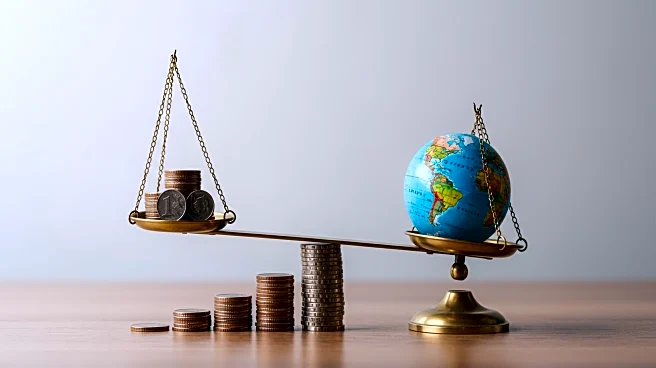What's Happening?
In July 2025, the U.S. consumer price index (CPI) rose by 2.7% compared to the previous year, maintaining the same rate as June, according to the Bureau of Labor Statistics. Economists have noted that the Trump administration's tariff policies are contributing to inflation, particularly in core goods prices. The core CPI, which excludes volatile food and energy prices, increased by 3.1% from July 2024, marking the fastest annual rate since February. Economists predict this rate could peak at 3.8% by the end of the year as tariffs further impact consumer prices. The average household is estimated to lose $2,400 due to these tariffs, with noticeable price increases in household furnishings and apparel.
Why It's Important?
The steady rise in inflation, driven by tariffs, has significant implications for U.S. consumers and businesses. As tariffs increase the cost of imported goods, businesses often pass these costs onto consumers, leading to higher prices for everyday items. This inflationary pressure can reduce consumer purchasing power and potentially slow economic growth. The impact is particularly felt in sectors like household furnishings and apparel, where price increases are evident. The broader economic implications include potential shifts in consumer spending patterns and increased financial strain on households.
What's Next?
Economists anticipate that the effects of tariffs will become more pronounced in the coming months, potentially leading to further increases in inflation rates. As the core CPI is expected to rise, businesses and consumers may need to adjust their strategies to cope with higher costs. Policymakers may face pressure to address these inflationary trends, possibly reconsidering tariff policies or implementing measures to mitigate their impact. The ongoing debate over the effectiveness of tariffs in achieving economic goals may intensify as stakeholders assess their long-term consequences.
Beyond the Headlines
The inflationary impact of tariffs raises ethical and policy questions about the balance between protecting domestic industries and the financial burden on consumers. The long-term effects of sustained inflation could lead to shifts in economic policy and consumer behavior, potentially influencing future trade negotiations and economic strategies. The cultural dimension includes how consumers adapt to changing prices and the potential for increased demand for domestic goods as imports become more expensive.














